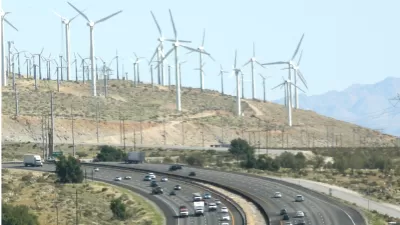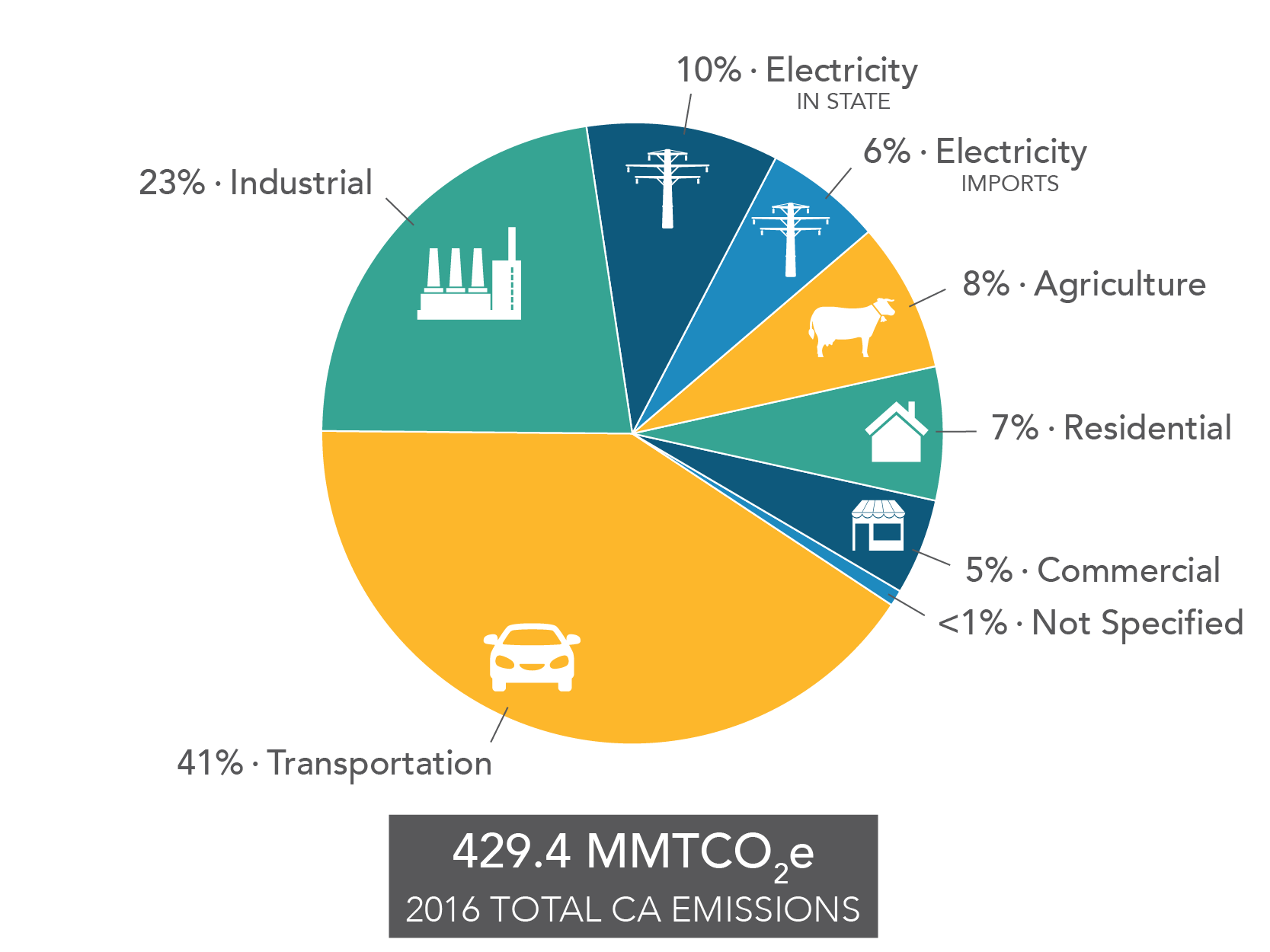Senate Bill 100 by Sen. Kevin de León has one more hurdle to clear before it becomes law. While the state's greatest climate challenge isn't electricity generation, it will be helpful as more motorists turn toward electric vehicles.

California is on the verge of passing landmark energy legislation, again. Senate Bill 100 by Sen. Kevin de León (D-Los Angeles), which requires the state's electricity generation, or Renewables Portfolio Standard, to become 100 percent carbon-free by 2045, cleared the Assembly on a 44-33-3 vote on Tuesday.
The bill returned to the Senate on Wednesday to approve the amendments passed by the Assembly, a process known as concurrence. It passed on a 25-13 vote, reports Taryn Luna for The Sacramento Bee.
"If it is signed by the governor, California would become the second state in the U.S. to rely solely on clean energy by 2045," reports Liam Dillon, who covers California state politics and policy for the Los Angeles Times.
Hawaii was the first to implement such a plan [in June 2015, and Hawaii cities this year committed to 100 percent renewable power for ground transportation, also by 2045].
Gov. Jerry Brown has not taken a public position on SB 100, and De León said after the vote that he has not received a firm commitment from the governor that he’d sign the bill. The governor used the power of his office to push other climate change bills, including extending the state’s cap-and-trade program last year. But on the clean energy bill, representatives for Brown have said the governor doesn’t usually weigh in on pending legislation.
However, Marianne Lavelle, a reporter for InsideClimate News, writes:
Brown hasn't commented on it but is widely expected to sign the legislation as one of the crowning environmental achievements of his administration, which ends in January. The renewable energy commitment also comes on the cusp of a Global Climate Action Summit that Brown is hosting in San Francisco beginning Sept.12.
"In addition to the 2045 target, Senate Bill 100 would also require electric utilities and other service providers to generate 60% of their power from renewable sources by 2030, up from the current 50% goal set for that date," adds Dillon.
The measure’s opponents, chiefly Republican legislators, argued that phasing out fossil fuels by 2045 was not achievable, and could sharply increase energy prices while state regulators tried to design policies to reach the target.
In addition, the "bill is opposed by Pacific Gas and Electric Company, San Diego Gas And Electric Company, Western States Petroleum Association, Agricultural Council of California and more than two dozen others," reports Luna of The Sacramento Bee.
Climate assessment released
The day before the Assembly vote, the California Natural Resources Agency, the Governor's Office of Planning and Research, and the California Energy Commission released California’s Fourth Climate Change Assessment, "which details new science on the devastating impacts of climate change and provides planning tools to support the state’s response," according to the agency's press release [pdf].
"The number of large fires across the state will likely increase by 50 percent by the end of the century while the amount of land that burns annually will rise 77 percent, according to a new, far-reaching state report that seeks to document the impacts of climate change," reports Kurtis Alexander for the San Francisco Chronicle on the far-reaching assessment.
Transportation implications
California's greatest climate challenge lies not with electricity generation, that represents 16 percent of its greenhouse gas emissions inventory, and which has been shrinking as utilities turn toward renewable sources. The largest source of greenhouse gas emissions is the transportation sector, at 41 percent, where emissions have been increasing in the last two inventory reports as Californians abandon cars for light trucks and increase vehicle miles traveled.
Courtesy of California Air Resources Board.
To reduce those emissions, the California Air Resources Board is counting on more people replacing their gas and diesel-powered vehicles with zero-emissions vehicles. Lavelle of InsideClimate News writes:
The carbon-free electricity commitment will also help California meet its ambitious goals of putting 1.5 million zero-emission vehicles on its roads by 2025, and 5 million by 2030. Currently, even though California leads the nation in electric cars, those vehicles still draw power from a grid that gets 34 percent of its electricity from natural gas, its largest source, and 4 percent from coal. As recently as 2008, California obtained 46 percent of its power from natural gas and 11 percent from coal.
Related posts:
-
Energy stakeholders in California are watching five important bills to see which go forward with three weeks remaining in the legislative season. One would require the state to generate all electricity from renewable sources by 2045.
-
California Achieved its Climate Goal; Now the Hard Part Begins, July 20, 2018
New York Times climate reporter, Brad Plumer, comments on California's landmark accomplishment in reducing emissions, observing that with the low-hanging electricity generation fruit picked, reducing transportation emissions will prove formidable.
-
California Adopts One of Nation's Highest Renewable Energy Mandates, October 13, 2015Gov. Jerry Brown signed stripped-down legislation that sets a target for the state of generating 50 percent of electricity from renewable sources by 2030 and doubling energy efficiency standards in buildings by the same year.
Hat tip to Dan Morain of CALmatters.
FULL STORY: California Assembly advances 100% clean energy bill

Trump Administration Could Effectively End Housing Voucher Program
Federal officials are eyeing major cuts to the Section 8 program that helps millions of low-income households pay rent.

Planetizen Federal Action Tracker
A weekly monitor of how Trump’s orders and actions are impacting planners and planning in America.

Ken Jennings Launches Transit Web Series
The Jeopardy champ wants you to ride public transit.

Washington Legislature Passes Rent Increase Cap
A bill that caps rent increases at 7 percent plus inflation is headed to the governor’s desk.

From Planning to Action: How LA County Is Rethinking Climate Resilience
Chief Sustainability Officer Rita Kampalath outlines the County’s shift from planning to implementation in its climate resilience efforts, emphasizing cross-departmental coordination, updated recovery strategies, and the need for flexible funding.

New Mexico Aging Department Commits to Helping Seniors Age ‘In Place’ and ‘Autonomously’ in New Draft Plan
As New Mexico’s population of seniors continues to grow, the state’s aging department is proposing expanded initiatives to help seniors maintain their autonomy while also supporting family caregivers.
Urban Design for Planners 1: Software Tools
This six-course series explores essential urban design concepts using open source software and equips planners with the tools they need to participate fully in the urban design process.
Planning for Universal Design
Learn the tools for implementing Universal Design in planning regulations.
Heyer Gruel & Associates PA
Ada County Highway District
Institute for Housing and Urban Development Studies (IHS)
City of Grandview
Harvard GSD Executive Education
Toledo-Lucas County Plan Commissions
Salt Lake City
NYU Wagner Graduate School of Public Service






























